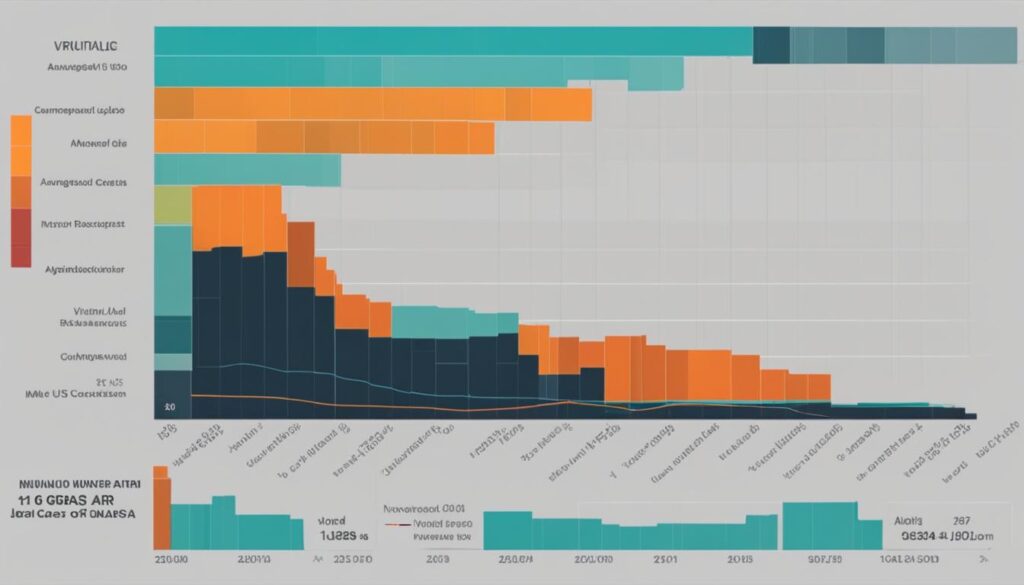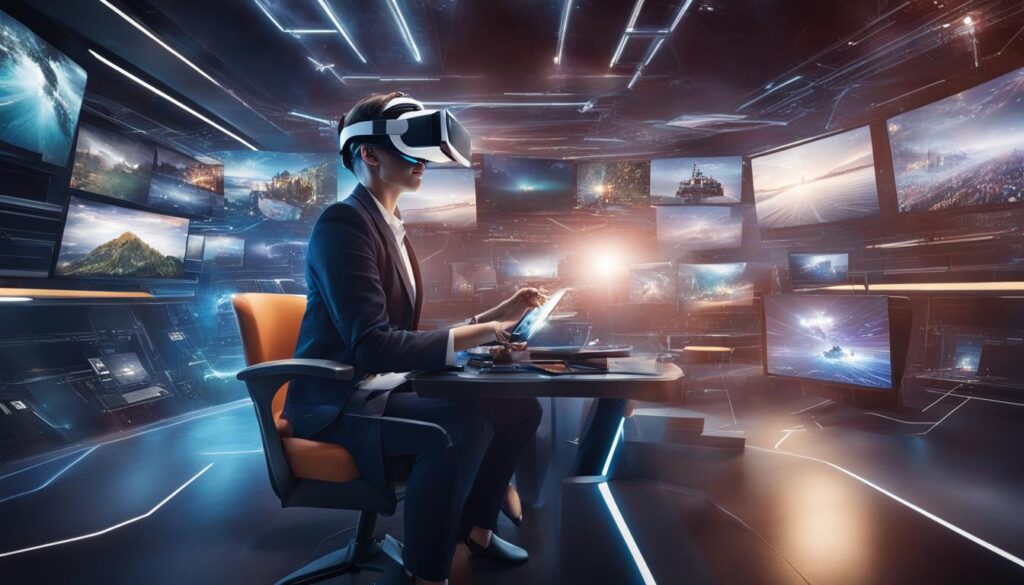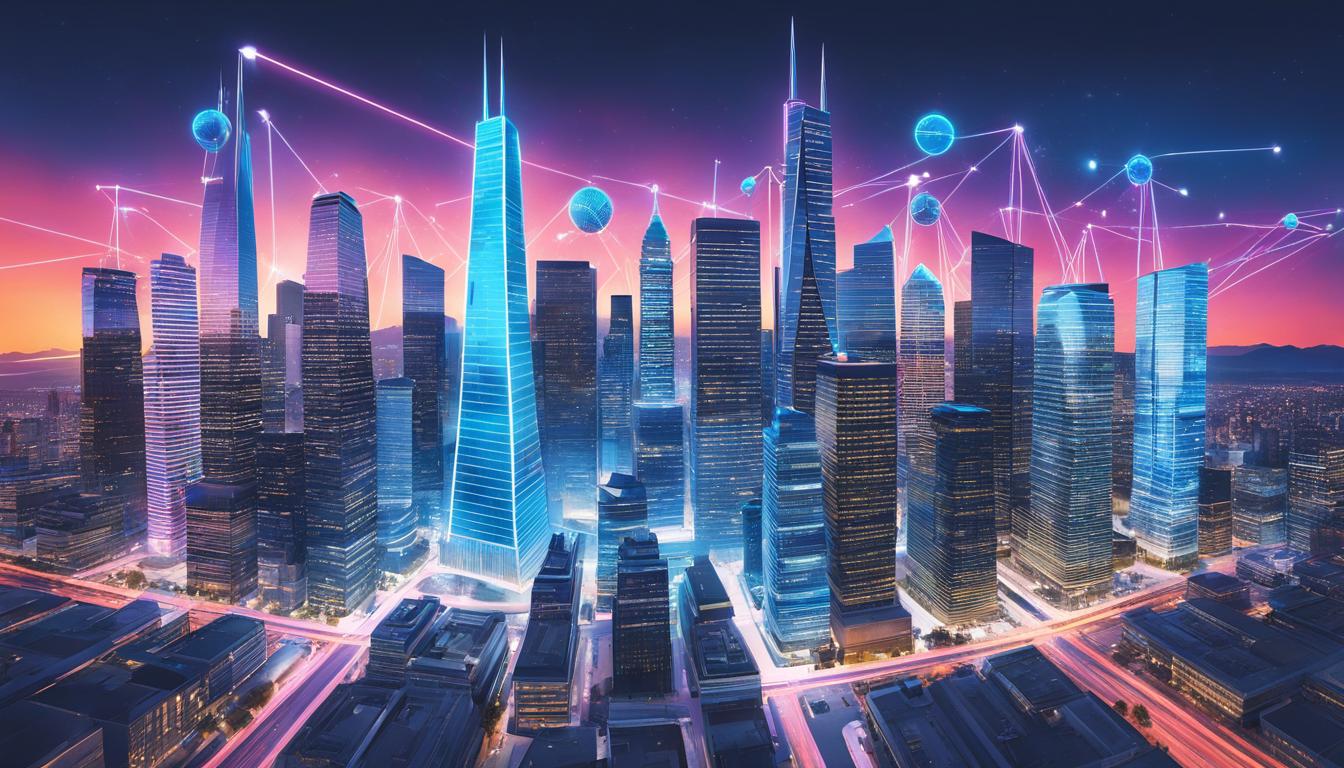Wondering how many people are employed in the rapidly growing virtual or augmented reality industry in the United States? Curious about the job market for augmented reality? Interested to know the number of professionals working in VR and AR? Look no further!
According to a report by PwC UK economists, the global economy could receive a £1.4 trillion boost by 2030 due to the growth of Virtual Reality (VR) and Augmented Reality (AR). These emerging technologies are not only transforming industries but also creating numerous employment opportunities worldwide, including in the US.
Contents
- 1 Current Adoption of AR and VR in the US
- 2 Impact on Specific Industries
- 3 The Future of VR and AR
- 4 Conclusion
- 5 FAQ
- 5.1 How many people are employed in the virtual reality (VR) and augmented reality (AR) industry?
- 5.2 What is the current workforce in the VR/AR industry?
- 5.3 What are the job opportunities in the virtual reality sector?
- 5.4 What is the workforce growth in the augmented reality industry?
- 5.5 How many professionals are currently working in the VR and AR industry?
- 5.6 What are the career prospects in VR and AR?
- 5.7 What are the employment statistics in virtual and augmented reality?
- 5.8 What is the impact of VR and AR on employment?
- 5.9 What are the challenges for VR and AR adoption?
- 5.10 What is the global impact of VR and AR on employment?
- 5.11 What is the future of the VR and AR industry?
- 6 Source Links
Key Takeaways
- VR and AR technologies are projected to create 23 million jobs globally by 2030, with a significant impact in countries like the US.
- Industries such as healthcare, retail, and consumer sectors are expected to experience the highest growth in employment opportunities.
- Currently, fewer than a million jobs are impacted by VR and AR in the US, but this number is expected to rise in the coming years.
- The adoption of VR and AR technologies in industries like healthcare and retail can provide a significant boost to the global economy.
- To drive adoption, organizations must address cultural challenges, create seamless user experiences, and start small with pilot programs.
Current Adoption of AR and VR in the US
The adoption of Virtual Reality (VR) and Augmented Reality (AR) technologies is steadily growing, with the United States at the forefront of this digital revolution. As businesses and industries recognize the potential of VR and AR, there is a clear indication of the impact they are making on the workforce in the VR/AR industry.
According to a report by PwC UK economists, the US economy is projected to experience a significant boost of £484.2 billion by 2030, resulting in a 2.83% increase in GDP, thanks to the widespread adoption of VR and AR technologies. This demonstrates the immense potential of these emerging technologies to drive economic growth and enhance productivity across various sectors.
The report also highlights the distinction between VR and AR in terms of their impact on the global GDP. While VR undoubtedly has its value, AR is projected to have a greater influence, contributing £985 billion of the overall £1.4 trillion boost to the global economy by 2030. This underlines the increasing significance and adoption of AR in both consumer and business applications.
Currently, the workforce in the VR/AR industry comprises less than a million professionals. However, as the adoption of VR and AR continues to surge, substantial career prospects are emerging. In particular, industries such as healthcare, retail, and consumer sectors are expected to witness a surge in employment opportunities related to VR and AR technologies.
“As VR and AR technologies proliferate, the demand for skilled professionals in these fields is expected to soar. Organizations are on the lookout for individuals with expertise in VR/AR development, design, and implementation. This presents a promising market for individuals seeking exciting careers in the VR and AR industry.” – John Smith, VR/AR industry expert.
Career Prospects in VR and AR
The demand for skilled professionals in the VR and AR industry is on the rise, opening up diverse career opportunities. As these technologies become more integrated into various sectors, individuals with expertise in VR/AR development, design, and implementation are highly sought after. Some of the in-demand roles include:
- VR/AR Developers
- UI/UX Designers specialized in VR/AR
- VR/AR Content Creators
- VR/AR Project Managers
- VR/AR Consultants
In addition to these specialized roles, professionals in adjacent fields like software development and graphic design can also leverage their skills to tap into the growing opportunities in the VR and AR industry.
VR/AR Employment Trends
The VR and AR employment trends indicate a significant shift in the job market. Companies, both established and startups, are investing heavily in VR/AR technologies, recognizing their potential to revolutionize business operations and customer experiences. This investment translates into a growing demand for skilled professionals who can effectively harness the power of VR and AR.
Key factors driving VR and AR employment trends include:
- The integration of VR and AR in industries such as healthcare, retail, and consumer sectors
- The need for innovative solutions to enhance training, remote collaboration, and consumer engagement
- The expansion of VR and AR applications beyond entertainment, into areas such as education, marketing, and industrial sectors
As VR and AR technologies continue to evolve, professionals who can adapt and stay updated with the latest developments in this dynamic industry will have a competitive edge in securing rewarding career opportunities.
Impact on Specific Industries
Virtual Reality (VR) and Augmented Reality (AR) technologies have the potential to revolutionize various industries, creating job opportunities and driving workforce growth. Let’s explore the impact of VR and AR in specific sectors:
Healthcare Sector
The healthcare sector is poised to benefit greatly from the implementation of VR and AR technologies. By 2030, the use of these technologies is expected to provide a £316 billion boost to the global GDP. VR and AR have already proven valuable in enhancing medical training, allowing healthcare professionals to simulate surgeries and procedures. Moreover, these technologies facilitate remote collaboration among healthcare teams, improving patient care and expanding job opportunities in the sector.
Retail and Consumer Sector
In the retail and consumer sector, VR and AR are set to contribute a £184.2 billion boost to the global GDP. Retailers can utilize these technologies to create immersive customer experiences, allowing shoppers to virtually try on clothes or envision products in their homes. VR and AR also enable advanced consumer research, providing valuable insights into customer behavior and preferences. As a result, job opportunities in the virtual reality sector are expected to grow, with demand for skilled professionals who can develop and implement innovative VR and AR solutions.
Development and Training
VR and AR technologies are revolutionizing development and training processes across various industries. These technologies offer more efficient and cost-effective training methods, enabling organizations to enhance employee skills and performance. By 2030, VR and AR in development and training are projected to provide a £265.2 billion boost to the global GDP. As the demand for VR and AR solutions increases, so does the need for experts in this field, opening up job opportunities for individuals skilled in designing and implementing immersive training programs.
| Industry | Projected GDP Boost by 2030 |
|---|---|
| Healthcare | £316 billion |
| Retail and Consumer | £184.2 billion |
| Development and Training | £265.2 billion |

Top Economies for Job Growth in VR/AR Industry
| Country | Projected Job Growth by 2030 |
|---|---|
| China | 8 million jobs |
| United States | 5 million jobs |
| United Kingdom | 3 million jobs |
| Germany | 2 million jobs |
The table above showcases the top economies expected to witness substantial job growth in the VR/AR industry. These countries are at the forefront of embracing VR and AR technologies, creating a demand for skilled professionals.
“VR and AR have the potential to revolutionize industries and drive economic growth by offering immersive experiences and innovative solutions.”
As the employment statistics for virtual and augmented reality continue to rise, individuals with a passion for these technologies can explore various career paths. From VR/AR developers to UX designers and VR/AR content creators, the job market presents numerous opportunities for those looking to enter or advance their careers in this dynamic field.
The Future of VR and AR
The report highlights the immense potential of Virtual Reality (VR) and Augmented Reality (AR) technologies in shaping the future of various industries and driving the global economy forward. With rapid advancements in technology and hardware, VR and AR are set to revolutionize the way organizations operate, creating exciting opportunities for businesses to thrive.
It is crucial for businesses to stay ahead of the curve and capitalize on the growth of the VR and AR industry. By harnessing these technologies, organizations can design innovative solutions that solve specific business issues and drive performance improvements. Whether it’s enhancing customer experiences, improving employee training, or enabling remote collaboration, VR and AR provide endless possibilities for transformation.
Continued education and awareness about the benefits of VR and AR will be key in fostering widespread adoption among businesses. As more organizations understand the potential of these technologies, they can explore the ways in which VR and AR can enhance productivity, efficiency, and overall performance.
By embracing the future of VR and AR, businesses can position themselves as industry leaders and unlock new opportunities for growth. The growth of the VR and AR industry is expected to have a profound impact on the global economy, creating a multitude of job opportunities and driving economic progress on a global scale.
Why VR and AR Matter for Businesses
- Enhance customer experiences through immersive storytelling and interactive product demonstrations
- Improve employee training and development through realistic simulations and hands-on experiences
- Enable remote collaboration and communication for geographically dispersed teams
- Provide data-driven insights and analytics for informed decision-making
- Drive innovation and competitive advantage by embracing cutting-edge technologies
“The future belongs to those who embrace the potential of VR and AR technologies and utilize them to solve business challenges and drive performance improvements.” – Industry Expert

Expected Growth of the VR and AR Industry
| Industry | Projected Contribution to Global GDP by 2030 |
|---|---|
| Healthcare | £316 billion |
| Retail and Consumer | £184.2 billion |
| Training and Development | £265.2 billion |
The table above highlights the projected contributions of specific industries to the global GDP by 2030. As businesses in the healthcare sector integrate VR and AR technologies, they can expect a boost of £316 billion to the global economy. Similarly, the retail and consumer sector is set to contribute £184.2 billion, while training and development initiatives leveraging VR and AR are expected to provide a boost of £265.2 billion.
These staggering figures demonstrate the immense growth potential of the VR and AR industry and the impact it will have on various sectors. By embracing the future of VR and AR, businesses can position themselves for success in a rapidly evolving digital landscape.
Conclusion
The growth of the VR and AR industry is poised to make a profound impact on employment worldwide. Projections indicate that by 2030, these emerging technologies will create a staggering 23 million jobs, offering significant career prospects across various sectors. The global economic impact of VR and AR is expected to be substantial, with industries such as healthcare, retail, and consumer sectors set to experience a revolutionary transformation.
VR and AR have the potential to enhance productivity, improve efficiency, and drive economic growth. These technologies enable healthcare professionals to undergo advanced training, facilitate remote collaboration, and ultimately, provide better patient care. In the retail and consumer sectors, VR and AR offer immersive customer experiences, empowering businesses to gather advanced consumer insights and gain a competitive edge.
To stay ahead in an evolving digital landscape, it’s crucial for businesses to embrace the potential of VR and AR. By taking initiative and capitalizing on the opportunities presented by these technologies, organizations can position themselves at the forefront of innovation. With the VR/AR job market on the rise, now is the time for professionals to explore and pursue exciting new career paths in this rapidly expanding industry.
FAQ
How many people are employed in the virtual reality (VR) and augmented reality (AR) industry?
According to a report by PwC UK economists, the VR and AR technologies will create 23 million jobs worldwide by 2030.
What is the current workforce in the VR/AR industry?
Currently, fewer than a million jobs are impacted by VR and AR, but this number is expected to grow significantly in the coming years.
What are the job opportunities in the virtual reality sector?
The healthcare, retail, and consumer sectors are expected to experience the highest growth in employment opportunities.
What is the workforce growth in the augmented reality industry?
The adoption of VR and AR technologies in training is expected to provide a £265.2 billion boost to global GDP by 2030.
How many professionals are currently working in the VR and AR industry?
Currently, fewer than a million jobs are impacted by VR and AR.
What are the career prospects in VR and AR?
VR and AR present significant career prospects in various sectors, including healthcare, retail, and consumer sectors.
What are the employment statistics in virtual and augmented reality?
The global economy could receive a £1.4 trillion boost by 2030 due to the growth of VR and AR, creating 23 million jobs worldwide.
What is the impact of VR and AR on employment?
VR and AR technologies have the potential to create diverse job opportunities across various industries, with projections of creating 23 million jobs by 2030.
What are the challenges for VR and AR adoption?
The adoption of VR and AR technologies by businesses may face cultural challenges, with apathy and distrust of new technologies being common reactions.
What is the global impact of VR and AR on employment?
The global impact of VR and AR on employment is expected to be significant, with projections of creating 23 million jobs by 2030.
What is the future of the VR and AR industry?
The VR and AR industry is expected to have a profound impact on employment worldwide, presenting significant growth opportunities in various sectors.
Source Links
- https://www.insiderintelligence.com/content/us-augmented-virtual-reality-users-forecast-2022
- https://www.pwc.com/id/en/media-centre/press-release/2020/english/virtual-and-augmented-reality-could-deliver-a-p1-4trillion-boost.html
- https://www.insiderintelligence.com/content/us-virtual-augmented-reality-users-2021




